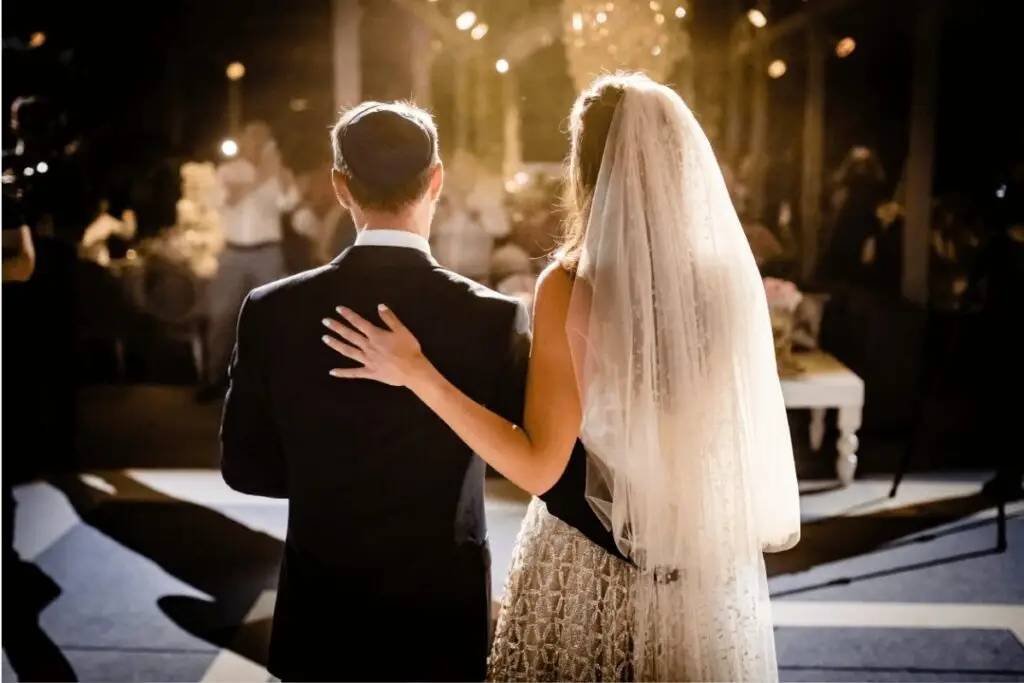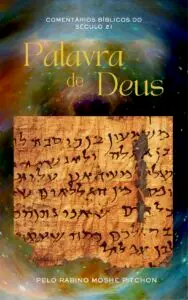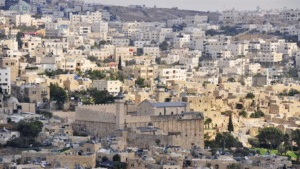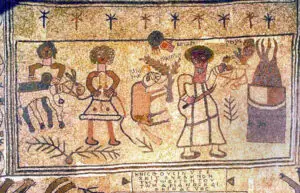Thirty-five hundred years of accumulated Jewish experience
Jewish Marriage in the 21st Century
On the eve of Yom Kippur, a man once stopped the Berditchever Rebbe Rabbi Levi Yitzḥak (1740–1809), on his way to the synagogue, and said:
“Rebbe, I have little to reproach myself for. I have committed no grave sins. But God — He has much to reproach Himself for. He has taken away children, made mothers weep, permitted wars and massacres. It is He who should repent, not I.”
In some retellings, the Rebbe turns to his disciples and says:
“Why did you let him go? A person who can speak so honestly with God must stay near us.”
I do not consider that story blasphemous. Rather, it reflects a faith deep enough to call God to account, and it points us toward a more realistic, 21st-century understanding of the High Holidays.
These days are not meant to crush us with guilt or lull us into denial; instead they summon us to confront our shortcomings with honesty and courage, forcing us to ask the questions we often avoid.
Rosh Ha-Shanah today is a both a celebration — we have survived another year-and a pressing challenge, especially those of us approaching the boundaries of our lifetime: what mark we are going to leave on the world?
A popular Hebrew proverb teaches that every person should strive in life to build a home, plant a tree, and write a book.
These are not necessarily literal tasks but metaphors for legacy.
To “build a home” is to nurture family across generations.
To “plant a tree” is to create something lasting that nourishes those who follow.
To “write a book” is to look at the story of our lives, and ask what lessons- from both our accomplishments and our failures- we want to pass on to our children and grandchildren. n
Another story that comes to my mind, is about a person lost in the jungle who after many days of wandering sees another human being from afar. Breathless and anxious, he runs up to him and says:
“Surely you know the way out.” But the other replies: “Friend, I too am lost. The only thing I can tell you is which way not to take.”
So it is with us. By reviewing our own journeys, we may not always know the way forward, but we can guide others — pointing out the paths that lead nowhere, and those worth trying.
On the eve of Rosh Hashanah 5786, together with wishing you a year of health and renwal I share the question that was in everybody’s lips this past year: “How long will this go on? When it will end?”
Of course, I don’t know an answer. Though this year I wrote four books circling around this question, and consequently I have some hunches about the kind of world we are going to leave to those that come after us, I must paraphrase the biblical sage Kohelet (Ecclesiastes):
There is a time to sit on the bleachers, a time to be tourists, a time to observe what others do. But there is also a time to examine the foundations of the home we have built; to check whether the tree we planted still stand; to reread the story of our life and ask whether we retired too early from it- and if there are still pages we can add.
So, let’s make this coming year a project of involvement, not to withdrawal. Let’s be sure that we leave behind a legacy we can be proud of, a gift to the world whose birthday we celebrate at Rosh ha-Shanah
שנה טובה
Shanah Tovah
Rabbi Moshe Pitchon

The People and Their Foundational Literature
The people who, from the 12th century B.C.E. on, lived for more than a thousand years in the land of Israel, in the kingdoms of Israel and Judah, gave the world the Hebrew Scriptures.
At first, the people of these two kingdoms recorded their experiences and transmitted the values they learned from them orally. Over time, as writing became more widespread, this oral heritage was systematized into 24 volumes, which form the literary foundation of the Jewish People.
For the Jews, in particular, this collection of books—their foundational literature—encapsulates what is authentically and exclusively Jewish.
All authentic Jewish thought begins in the foundational literature. It is there that the values, ideals, and hopes of the Jewish people are rooted.
From a formal perspective, the Hebrew Scriptures constitute a literary anthology composed of 24 books. Written and revised by various authors over several centuries, these volumes are organized into three categories: Torah (Pentateuch), Neviim (Prophets), and Ketuvim (Writings).
The first Hebrew letter of each of the three sections forms the acronym TaNaKh.
The way one names this collection of books is not neutral.
When the whole set is called “Torah,” Kitvei ha-Kodesh, “Old Testament,” or simply “Bible,” the choice of name already reveals an ideological stance.
Each label, in that case, highlights only a part of what the TaNaKh represents. In doing so, it reduces the TaNaKh and restricts its true dimension as a heritage of values and visions intended for all humanity.
It is easy to imagine that this collection of 24 books is merely a work of doctrinal exposition. But that would reduce far too much what it really is.
The TaNaKh is indeed a religious text—but it is also literature at the highest level. In fact, it is a literary masterpiece, one of the most influential classical collections in all of history. To recognize this in no way diminishes the rabbinic perspective; on the contrary, it broadens our understanding of its greatness.
The TaNaKh is undoubtedly one of the pillars in the very formation of the idea of humanity itself.
Much of what it contains—especially its non-legal portions and the moral power of the prophets—went beyond the limits of Judaism. It became a shared inheritance for much of humanity, ceasing to be something exclusively Jewish.
These books were written to help individuals and peoples seek what is true and good, to the extent that their human capacities allowed them.
Judaism does not invent; it discovers perspectives—not necessarily what others saw.
That is why, in religious language, the word used to describe this phenomenon is “revelation.” Something that is there is revealed. What is revealed is what the human being is, and how life works.
From there, based on the knowledge acquired, the next step was to conceive behaviors—how to act in life as a human being.
The human being, or if you prefer, human nature, however, is not static, immutable. Through the knowledge gained as a result of interacting with the rest of the world, humanity changes. What religion calls “revelations” are ongoing.
“Revelation” is always partial; it sheds light on the moment, perhaps even a little on the future. Revelation, however, is never complete. There is always something still to be discovered, to be revealed.
The Talmud tells an imaginary story of Moses sitting in a study session with Rabbi Akiva (one of Judaism’s greatest teachers who lived more than a thousand years after Moses). Moses did not understand a word of what Rabbi Akiva was saying. His only consolation came when a student asked Rabbi Akiva: “Master, what is the source of this decision?” He replied: “It is a law given to Moses at Sinai.”
The understanding is that human knowledge is cumulative. Each generation stands on the shoulders of the one before it. While dependent on the previous generation to stand on its shoulders, it now has a new perspective. It sees something that previous generations necessarily could not see.
A generation that does not produce a new discovery, that does not “create” something new, impoverishes the world. Certainly, it fails to fulfill Judaism’s central commitment: “the continuation of the work of creation.”
It is not only by bringing more children into the world that the world is created, but by helping them to understand how to think.
Jews are constantly discovering how to do things that had not been done before, and improving those already done. From the beginning they are taught to be curious and to take risks.
No doubt it is not easy to take this attitude in life. There are many mistakes, perhaps more than achievements. Yet this is the way a Jew is taught to think, because when achievements do occur they are usually incomparable in magnitude and importance.
This disposition in life requires a special character. Some call it being “stiff-necked,” others “arrogance.” Though in reality, it is the conviction that this people was not chosen to enjoy the luxury of standing aside from the world.
There is a Jewish way of thinking. There is a way of being Jewish. It is demanding, it is difficult, but also rewarding, for it allows those peaks where the Jew looks back and a little forward, and can say that there was a reason he came into this world … and he accomplished.
To perceive the reason for our temporary existence in the world is the source of the feeling of individual fulfillment.
Never miss any important news. Subscribe to our newsletter.
Related News

The People and their Foundational Literature

Talking to a New Generation


Modifying the Law is Affirming It

You Cannot Say Something about Somebody That is Not

Overcoming Regressive Beliefs


Israel’s historical responsibility is to face “giants.”

The TaNaKh is not necessarily religious literature

The Sacrifice of Reason Rather Than Isaac’s

